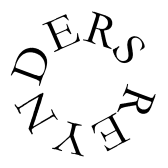

|
|
|
|
KUKU1 - - - 2 - - - 3 - - - 4 - - - Djembe #1 B . T t . . S . B . T t . . S . Djembe #2 T t . s T t S . T t . s T t S . Sangban bell x . x x . x x . x . x x . x x . drum o . . i . . o . o . . i . . o .lead-in ^ Kenkeni bell (easy) . . . x . . x . . . . x . . x . bell (hard) x x . . x x . . x x . . x x . . drum o o . . o o . . o o . . o o . . Dununba bell x . x x . x x . x . x . x . x . drum . . . o . . . . . . . . o . o .follow-in ^ bell x . x x . x x . x . x . x . x . drum o . . o . . . . . . . . . . . . COUNTRY: The forest part of Guinea, in the region of Beyla. (Wassolon, Journey into Rhythm, Numayakayi, Les Ballet Africains liner notes) The forest region of Beyla and Macenta in Guinee (Mandeng Djeli liner notes) REGIONAL/ETHNIC GROUPS: Konianka (Abdoulaye Sylla liner notes) Konianke (Master of the Forest liner notes) PURPOSE/BACKGROUND: A celebration dance for the fisherman (Michael Marcus liner notes) Although not part of Mandeng, this region was peopled by Malinke many centuries ago and still today, the languages are rather similar for comprehension to be possible. This piece is played only by the djembe of which two give the accompanying rhythm, while the solo is beaten on a big low djembe. (Wassolon liner notes) Mandingo dance for children. The children take vigour and physical power from the dance in order to become vigourous children. (Liner notes Les Tambours Goree) A Sorcerer's dance (Les Ballet Africains liner notes) A rhythm of rejoicing... often played after harvesting the rice (Mandeng Djeli liner notes) **** Kuku comes from Beyla, a town in Guinea where Konyaka, a Malinke dialect, is spoken but this rhythm has spread throughout the Malinke region. Today there are many ways of playing Kuku. The rhythm is often played in the evening. Men and women join the musicians and ask them to play Kuku for their enjoyment. While dancing to the music, they forget their troubles and return home content. According to Famadou Konate, Kuku wasn't originally played with djun djun accompaniment. The first djembe pattern (note by AP: s.oo..s.s.oo..s.) gives Kuku its distinctive musical flavor. This pattern was transposed in a characteristic way to the djun djuns and this arrangement gave rise to the standard, modern way of playing Kuku. Famoudou Konate found this way of playing Kuku somewhat "corny" and trite and composed his own djun djun melody. He also composed the song sung on this recording. However, the solo patterns are, in his words, from "the real Kuku. (From the German liner Notes, Rhythmen und Lieder aus Guinea, Professor Thomas Ott Translated by Albert Prak, Johannes Schya and Tom Daddesio) Kuku is traditionally played on krin (hollowed wood logs also known as Kolokolo) with sticks. Jembes / Dununs are recent additions. (Yves Goulik) A celebration dance for the fisherman (Michael Marcus liner notes) Although not part of Mandeng, this region was peopled by Malinke many centuries ago and still today, the languages are rather similar for comprehension to be possible. This piece is played only by the djembe of which two give the accompanying rhythm, while the solo is beaten on a big low djembe. (Wassolon liner notes) Mandingo dance for children. The children take vigour and physical power from the dance in order to become vigourous children. (Liner notes Les Tambours Goree) A Sorcerer's dance (Les Ballet Africains liner notes) A rhythm of rejoicing... often played after harvesting the rice (Mandeng Djeli liner notes) Liner note: "Coucouba is a rhythm found in several ethnic peoples (the Koyagas, the Dioulas, and the Maoukas) in the Ivory Coast and Burkina, a striking combination of ternary and binary rhythms. (Liner notes, Adama Dra= me) Kuku is the rhythm of celebration after the harvest. (Liner notes Mabiba Baegne, Dunun Rhythms I) **** SONG LYRICS: Call: Ah yey ku wey bo ji yamma doo wey (Abdoulaye Sylla, Guinee) Response: Ahhh, ku wey bo yamma doo wey Call: Zio na mayo zio ley ley (Abdoulaye Sylla, Guinee) Response: Zio, zio ley ley ley Ah, Ah, Ah Si Sayango Ah Si Sayango, Ah Si Sayango (Malik Sow, Senegal) Amana Tage Dabuse Amana Amana Dabufa Dabuse Amana (Malik Sow, Senegal) A Ah A, A Djia Molawu (Maimouna Bey Grecia, Guinea) Djahamu Solada Ah Djia Molaiay ***** Kuku The Kuku comes from Beyla, a town in guinea where they speak Konyaka, a Malinke dialect, but has spread all over the Malinke region. Today,there are multiple styles of playing Kuku. The rhythm is played often in the evening. Men and women are joining the musicians and ask them to play kuku for their delight. Dancing to the music, they forget their anxiety and are leaving happily. The "original Kuku" didn't had any bass accompaniment. The musical characteristic was determined by the first djembe pattern. This side drum has been transferred in a special way to the bass drums, originating the present-day way of playing Kuku. Song( by Famoudou Konate) : Oh iya! I te kuku fe n¥ye. Oh iya! I te kuku fe n¥ye. Oh yes! Play the Kuku for me. ---- Oh yes! Play the Kuku for me.
|